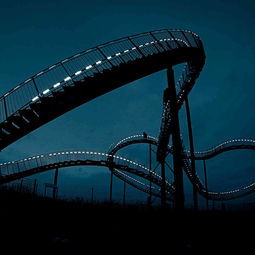07. Dezember 18

Metaphorical Actions for Workshops and Conferences
The agendas of team building workshops and offsite management conferences frequently include hands-on exercises or outdoor activities intended to "build team spirit" or to "experience something unusual". In my experience the choice of activity is often driven by motives that are not connected to the fundamental purpose or theme of the event, but emphasize incentive or excitement aspects. With increasing awareness of cost and time efficiency, however, it makes sense to maximize the "insight" potential of such supporting program elements. By utilizing the metaphorical meaning of the activity or scenario it will provide valuable opportunities for reflection and learning that supplement the listening-and-talking formats of workshops and conferences. I would like to share some ideas on selection, enactment, and debriefing.
Select a "meaning"ful activity!
As conference design consultant or workshop facilitator my first recommendation is to look for meaningful links between possible activities and the team history or perspective, the overall theme of the conference, or a central strategic development goal. Even if there is not an abundance of activities to choose from, it is often possible to accentuate a specific aspect of the activity or to enact it in a certain way in order to create a meaningful connection to the purpose of the event:
- A canoe ride to a picnic dinner on a peninsula in the Havel River near Potsdam took up the strategic guiding picture of "embarking into the high seas" as HR department in the company's globalization process. Although many of the mostly female team members had never been in a canoe and were ill-equipped for the ride with high heels and purses, they gained confidence and trust in the team effort to reach the destination safely.
- The theme of "leadership between delegation and instruction" was demonstrated by two very different cooking events for the same international team in Hamburg, Germany, and in Shenzhen, China: participants experienced the different styles of cooking instructors in Hamburg (delegating more complex tasks) and in Shenzhen (relying on demonstration of cooking techniques) and were able to draw analogies to culturally preferred leadership styles.
- The strategic goal of an international group in the packaging industry to implement quality assurance across the entire value chain clearly required closer collaboration and alignment across functions and national business units. That challenge was enacted at an international management conference in a domino exercise in which ten teams worked on parts of a 2000-piece domino chain reaction: in the first part with blinds between tables and the clear injunction not to communicate directly with neighboring tables, but only at an exchange corner some distance away from the tables. In the second part of the exercise, the blinds were removed, and the ten teams were able to check and fine-tune the setup of domino pieces across all ten tables. The resulting "quality wave" generated cheers not only from the group, but also from staff in the offices looking out on the indoor forum where the exercise took place.
Create a compelling, but safe scenario!
The metaphorical quality of a team exercise or group activity is enhanced by an inviting, attractive setting and a "compelling" story to set the stage. New ways of perception and problem solving, however, require degrees of freedom in the scenario to enable playful behaviors and a sense of basic safety and self-efficacy. In designing, organizing and facilitating exercises or activities I therefore recommend the following five "A" criteria:
- Authentic setting: The activity should "fit" the conference venue or its surroundings - in Dubai, it may be tempting to go snowboarding at the downhill ski arena, but a sundown excursion to the desert is definitely more compatible with the geography.
- Ambiguous challenge: The activity itself should go beyond a straight-forward task and offer sufficient room for various interpretations, for self-organization and trial-and-error.
- Alternative approaches: The opportunity for leaving one's comfort zone of established work routines and problem solving habits will be a chance to experiment and to try out new ways of communication and collaboration - an unusual setting, unfamiliar tools or materials, or a change of rules will be helpful.
- Affective involvement: The exercise or scenario should activate as many senses as possible in order to facilitate emotional involvement and to enrich experiential depth - including food or beverages is always a good start!
- Assured framework: Unfamiliar contexts will raise curiosity, but are quickly experienced as stressful, if attendees feel forced to participate, are afraid to be hurt, ridiculed or embarrassed, or have to perform at their limits for prolonged periods of time. It is thus important to make participation voluntary, to assure the necessary safety procedures and instructions, to offer varying degrees of challenge, and to provide breaks for rest and reflection.
Conduct a worthwhile debriefing!
As stimulating and satisfying as a well-designed group activity may be, it is the debriefing phase which enables insights for collective self-reflection and transfer to everyday practice. Ideally it should consist of three "C" steps:
- Collect: In the first phase, participants are invited to share their observations, individual experience, and feelings during the activity. If the exercise involved sub-groups, the collection should start out in the sub-groups before sharing perceptions in the entire group. If observers were part of the exercise or activity, they should be invited to report their impressions after the participants.
- Connect: The second phase deals with similarities and analogies to current practice ("Where do we experience the observed phenomena in our daily practice?"), capitalizing on the metaphorical nature of the activity.
- Construct: The final step invites to draw conclusions for improved collaboration and increased capability, and possibly to propose specific changes in communication and interaction ("What could we learn and possibly transfer from this exercise?").
The debriefing should be close to the activity in terms of space and time, but should be clearly separated from the scenario to give participants a chance to review their experience from a meta-perspective. Guiding questions are helpful to structure the debriefing, especially if parallel sub-groups start out on their own.
The outlined steps of selecting, enacting, and debriefing metaphorical actions may sound like a substantial investment, but the result can be a shared experience that participants will remember and make reference to for a long time.










